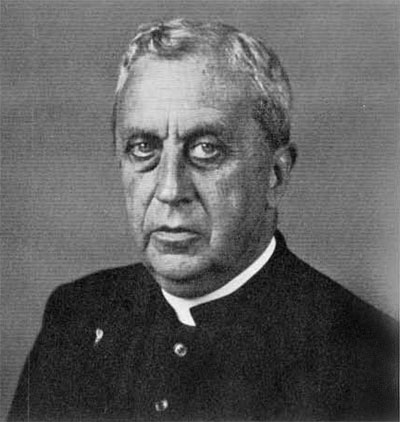
For over thirty years Dr. Legrain served as Curator of the Babylonian Section in the University Museum, an officer as distinguished as he was devoted. The work which he accomplished there must be better known to many citizens than to a distant colleague, however appreciative, who has to rely only upon his late friend’s publications and, more intimately, upon recollections of a gifted and attractive personality.
To some biographical details which have appeared in the press it may be permitted to add a sketch of his scholarly work. Beginning from 1912, his publications fall into three divisions, according as they were produced (1) during his early years in the Ecole pratique des Hautes Etudes, Paris, (2) as a Curator in the University Museum, and (3) as a member of the staff which constituted at various times the Joint Expedition (with the British Museum) to Ur. To his Paris years belong one volume and part of another in the Memoires of the French Mission archeologique de Perse; his own volume concerned the art of engraved seals, a subject which remained one of his paramount interests. Even before this he had paid a first tribute to another of these interests in Les Temps des Rois d’Ur, with an introduction of some forty pages, almost the first attempt, by no means unsuccessful, to mould the intelligible figure of an age out of a daunting mass of details, often little significant.
After his arrival in Philadelphia he was soon busy upon the Museum’s collections, both the antiquities and the cuneiform tablets excavated at Nippur in the closing years of the last century. From these resources he produced two volumes of historical inscriptions and fragments. But Legrain was, in a manner perhaps no longer practicable, a student of the material products as well as the languages of the Babylonian people and their neighbours, and so his work includes volumes upon the seals and upon the terra-cotta plaques in the Museum, but also, perhaps farther from his personal interests, studies of the ‘Luristan bronzes’ and of the Palmyrene sculptures.
In the seasons 1925-1925 and 1925-1926 Legrain was the epigraphist in the excavations at Ur, led by the late Sir Leonard Woolley, who has left a contemporary and feeling tribute–‘Dr. L. Legrain of the University Museum, to whose help I owe much more than I can express.’ This referred chiefly to his interpreting the inscriptions discovered, but Legrain was undoubtedly of great benefit to the Expedition both as a sharer in the tasks which fall upon all in common, and as a most agreeable companion, a quality so requisite to the life of a small group, even more isolated in those years than it would be now. One of his younger colleagues has related, among more serious merits, how ‘his gay, and sometimes cynical, Latin temperament was a source of particular joy to the younger members of the party, as he sang his way over the bumpy ten-mile track into Nasiriyah.’ Legrain’s first season was marked by the discovery of what remains (now in the University Museum) of the great Stele of Ur-Nammu, which pictured and described that king’s building of the ziggurat and the Moon-god’s temple. However, the famous ‘Royal Cemetery’ did not begin to be excavated until after those two seasons, and so Legrain missed the unearthing of those treasures which he afterwards so enthusiastically described.
His services to the Ur Expedition and to both of its constituent Museums were still greater in the publishing than in the discovery of its trophies. He wrote by himself two of the archaeological volumes (upon the cylinder-seals and the seal-impressions), contributed to the volume upon the Royal Cemetery, and–morst comprehensive of all his works–copied and catalogued about 1800 tablets of the Third Ur Dynasty, as well as taking an important share in the Royal Inscriptions.
It was through the Ur Expedition and all the work which grew out of it that the writer of these lines was privileged to know Legrain, who visited London (and his native land) both at the ends of his season in the field and at other times in furtherance of work upon his publications, and also to represent Philadelphia in the division of the Ur antiquities allotted to the Expedition after deduction of the major share retained by the Iraq Museum. When the splendid objects from the Royal Tombs were in the balance these occasions were sometime exciting. Particularly remembered was the decision about the celebrated mosaic ‘standard’ of Ur; it had to be carefully set against a number of objects held to be collectively its equal, but both sides naturally hoped for the ‘standard,’ and it was decided in the end, after much discussion, that it would be fairest to toss for the choice. When the hazard went against him Legrain took this with the perfect urbanity and good temper which he brought unfailingly to all these passages, whatever their issue, often ending with a joke in the manner and accent which added so much to the wit and charm of his conversation, never more pointed than when detailing his experiences on the ‘dig,’ commenting slyly upon the little oddities of his companions, or complaining with half-serious indignation about the young Philadelphians who were allowed to meddle with the exhibition of his beloved antiquities. All his friends would wish to have been remembered, especially in this vein of mischief, during the latter years of a man and a scholar in both characters so memorable himself, and so unmistakable a child of the happy country of his birth.
